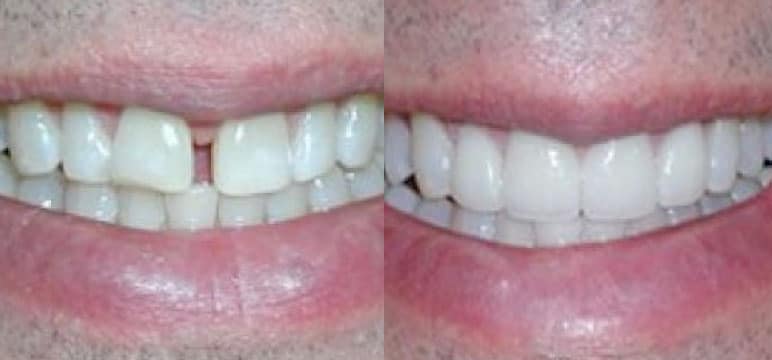
Our Teeth Whitening Services
At Big Smile Dental in Chicago, IL, we understand the power of a bright, white smile. It’s not just about aesthetics; it’s about feeling confident and radiant. That’s why we offer a range of professional teeth whitening services tailored to meet your individual needs. Our state-of-the-art whitening treatments are designed to remove stains and discoloration, restoring the natural whiteness of your teeth. We use the latest technology and high-quality whitening agents to ensure effective and long-lasting results. Our experienced dental professionals will work with you to choose the best whitening treatment, considering factors like the extent of discoloration, tooth sensitivity, and your overall oral health. Whether you’re preparing for a special event or want to rejuvenate your smile, our teeth whitening services at Big Smile Dental are here to help you achieve the luminous, attractive smile you deserve.
How Does Teeth Whitening Work?
Teeth whitening is a simple yet highly effective process that can transform your smile by lightening the shade of your teeth, providing you with a brighter and more confident appearance. This popular cosmetic dentistry procedure uses two essential teeth bleaches, hydrogen peroxide, and carbamide peroxide, which play a pivotal role in whitening.
These potent bleaching agents work by disintegrating the stubborn stains that accumulate on your teeth over time, effectively lifting them and revealing the lighter, natural color beneath. As a result, the overall shade of your teeth becomes softer, contributing to a whiter and more radiant smile that can enhance your self-esteem and leave a lasting impression.
It’s important to note that while teeth whitening is a highly successful method for achieving a brighter smile, it may yield different results for some. Therefore, it’s advisable to consult with us before embarking on a teeth whitening journey. This pre-whitening consultation allows us to evaluate your unique situation and determine if teeth whitening is the right solution for you.
The Teeth Whitening Process
The teeth whitening process at Big Smile Dental is a journey to a brighter smile, performed with the utmost care and professionalism. Initially, we conduct a thorough dental examination to assess your oral health and determine the suitability of whitening treatment. This step is crucial to ensure the safety and effectiveness of the procedure. Once you’re deemed a good candidate, we proceed with the whitening treatment, which involves applying a high-quality bleaching agent to the teeth. This agent works to break down stains and discoloration, revealing a whiter, brighter smile. The process is quick, typically taking about an hour, and is performed in our comfortable and relaxing dental office. We also offer take-home whitening kits for those who prefer to whiten their teeth in their home. These kits include custom-made trays and professional-grade whitening gel, providing a convenient and effective at-home whitening solution.
Caring for Your Whitened Teeth
Maintaining the Brilliance of Your Newly Whitened Smile
At Big Smile Dental, we understand that pursuing a brighter, more dazzling smile is a journey, not just a one-time destination. Achieving those stunning teeth-whitening results is undoubtedly thrilling, but our commitment to your smile’s journey doesn’t end there. Maintaining your newfound radiance and ensuring a lasting boost in your confidence are paramount. To that end, we go above and beyond by offering comprehensive guidance on caring for your teeth after whitening, guaranteeing that your radiant smile shines brilliantly.
The Importance of Good Oral Hygiene
One of the cornerstones of post-whitening care is adopting and maintaining excellent oral hygiene practices. Regular brushing and flossing are fundamental habits that contribute to the longevity of your whitened teeth and promote overall dental health. Proper oral hygiene helps prevent the formation of new stains and keeps your teeth looking their best.
Mindful Choices for Stain Prevention
Another critical aspect of preserving your newly whitened smile is making mindful choices regarding your diet and lifestyle. Some foods and beverages, such as coffee, tea, red wine, and dark-colored berries, are notorious for staining teeth. By reducing your consumption of these items or practicing moderation, you can significantly extend the life of your whitening results.
Regular Dental Check-Ups and Cleanings
Maintaining regular dental check-ups and professional cleanings is vital to post-whitening care. These routine visits allow our dental experts to monitor the condition of your teeth and ensure that your smile remains bright and healthy. Professional cleanings help remove surface stains and plaque buildup that can dull your teeth luster over time.
At Big Smile Dental, our commitment to your dental well-being extends far beyond the initial teeth whitening treatment. We take pride in helping you maintain your beautiful white smile for as long as possible. Our team is dedicated to providing personalized tips and advice tailored to your lifestyle and oral health needs. We understand that every patient is unique, and we are here to support you in preserving your radiant smile and boosting your self-confidence. With our guidance and your commitment to proper care, your newly whitened teeth can continue to shine brightly, leaving a lasting impression on everyone you meet.
Teeth Whitening for Sensitive Teeth
For those with sensitive teeth, teeth whitening can be a concern. However, we ensure that even acute patients can safely achieve a brighter smile at Big Smile Dental. We offer gentle whitening treatments specifically designed for sensitive teeth, minimizing discomfort while effectively whitening your teeth. Our dental professionals will carefully assess your level of sensitivity and recommend the most suitable whitening option. We also provide tips on managing sensitivity during and after whitening, such as desensitizing toothpaste and avoiding extremely hot or cold foods and beverages. Our goal is to make teeth whitening a comfortable and enjoyable experience for all our patients, regardless of tooth sensitivity.
Is Teeth Whitening Safe?
Safety is a top priority at Big Smile Dental regarding teeth whitening. Our professional whitening treatments are effective and safe for your teeth and gums. We use high-quality, tested whitening agents that are proven to be safe for dental enamel. Our experienced dental professionals supervise the whitening process, ensuring the treatment is performed correctly and safely. We also conduct a thorough dental examination before recommending any whitening treatment to ensure it’s appropriate for oral health. With our professional approach and attention to detail, you can trust that your smile is in safe hands at Big Smile Dental.
How Long Does Teeth Whitening Last?
The longevity of teeth whitening results varies from person to person and depends on several factors, including lifestyle and oral hygiene practices. Typically, the effects of professional teeth whitening at Big Smile Dental can last from several months to a few years. To extend the duration of your whitening results, we recommend avoiding stain-causing foods and beverages, maintaining good oral hygiene, and having regular dental cleanings. Touch-up treatments are also an option for those who wish to maintain their bright smile over the long term. Our team at Big Smile Dental is dedicated to helping you enjoy a radiant, white smile for as long as possible.
What Are My Whitening Options?
At Big Smile Dental, we offer a variety of teeth whitening options to suit different needs and preferences. Our in-office whitening treatment provides immediate and dramatic results, ideal for those looking for a quick smile enhancement. For patients who prefer the convenience of whitening their teeth at home, we offer professional take-home whitening kits with custom-made trays and professional-grade whitening gel. We also provide gentle whitening solutions for patients with sensitive teeth. Our dental professionals will discuss these options during your consultation and help you choose the best whitening treatment based on your goals, lifestyle, and oral health.
If you’re interested in more information about dental veneers or other dental restorative options, call Big Smile Dental today! Our team is happy to schedule a consultation at a time that works with your schedule.
Your new smile is waiting for you!


